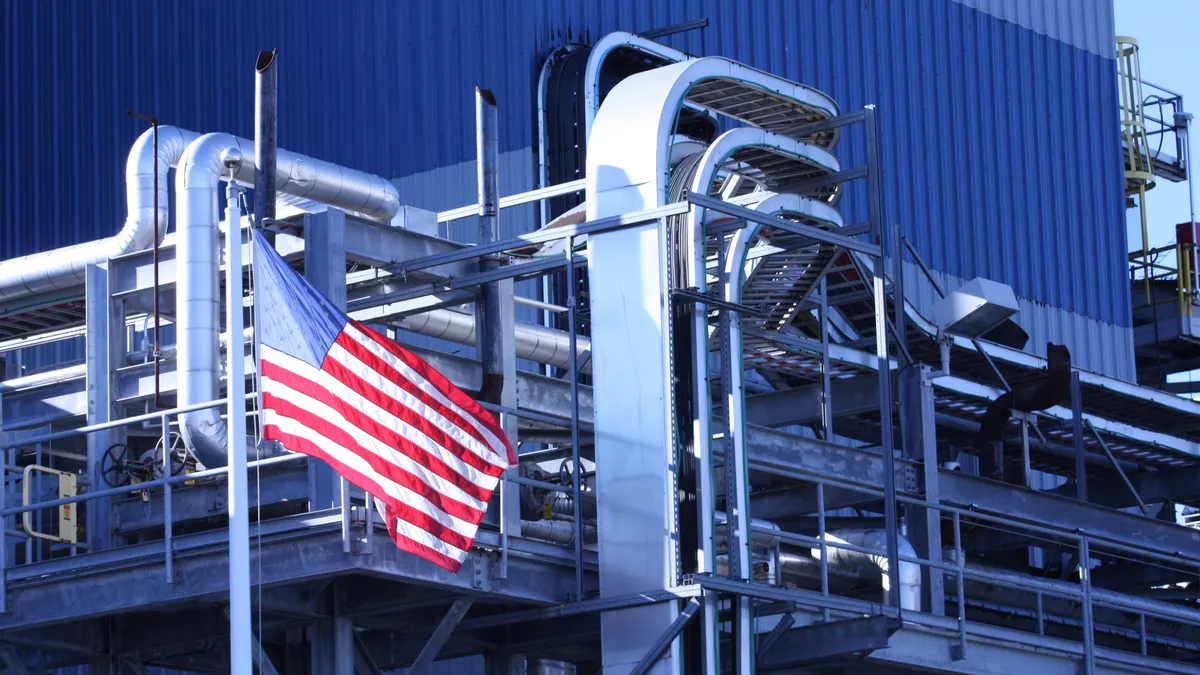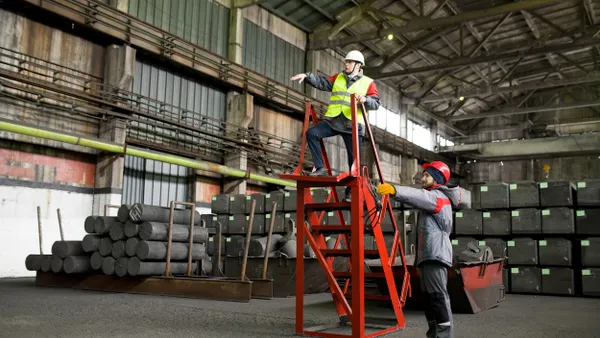Dive Brief:
- Standard Chartered has secured a $235 million green loan to finance the development and construction of a solar photovoltaic manufacturing plant in Wilmer, Texas, the bank announced Aug. 7.
- The loan will back the buildout of a 1.35 million square foot plant that is expected to generate 5 gigawatts direct current annually and will be operated by renewable energy company Trinasolar, according to a press release.
- The British bank said the six-year non-recourse financing deal — which only allows lenders to pursue repayment from the borrower’s collateral and not from other assets — is one of the first to be done for a U.S.-based solar panel manufacturing facility.
Dive Insight:
The solar manufacturing plant will include seven assembly lines for photovoltaic panels — which convert thermal energy into electricity — and produce three types of solar modules that can be used for commercial, industrial, utility- and residential-scale purposes, per the release.
The bank said the project would also boost the country’s renewable energy mix and accelerate its transition to clean energy, in addition to bringing 1,500 new jobs to locals in Texas.
“We are proud to have played a key role in this project which allows us to bring to life our commitment to working with clients towards net zero using our ability to provide comprehensive, innovative, and bespoke sustainable financing solutions,” Sridhar Nagarajan, Standard Chartered’s regional head of project export finance, Europe and Americas, said in the release.
The solar plant builds on Standard Chartered’s sustainability strategy, which includes a target to reach net-zero emissions in its own operations by 2025 and in financed operations by 2050.
The London-based financial institution, which operates in 59 global markets and manages over $800 billion in assets, updated its targets for emissions from the oil and gas sector last year and set a carbon budget that requires a 29% reduction in sectors’ absolute financed emissions by 2030, compared to a 2020 baseline. The bank’s targets are aligned with the International Energy Agency Net Zero Emissions scenario, it said at the time.
In line with this policy update, the bank announced in May it had committed to set a baseline and science-aligned target by 2025 to reduce methane emissions generated by its clients from the oil and gas sector.












